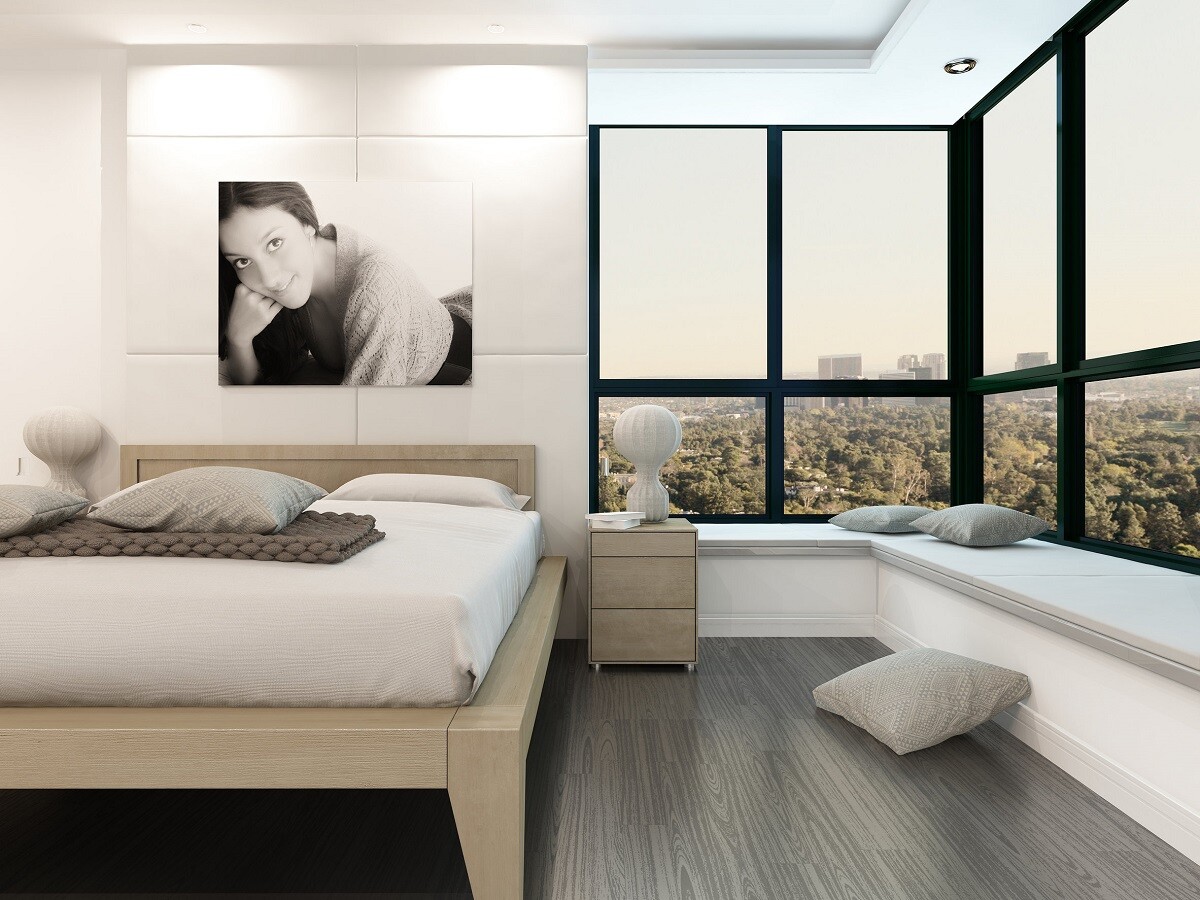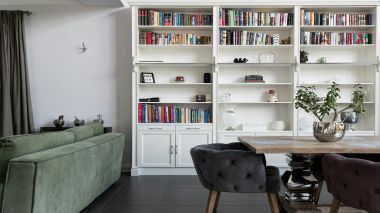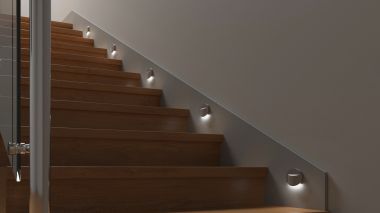Your Home – Your Style Part 3
In the last part of our series Your Home – Your Style, we want to show you ways to decorate interiors that are not as popular as those suggested in the earlier parts of our series. We want to introduce you to graphic style, zen, loft, vintage and Dutch style. These are all very distinctive and follow clear principles.

The graphic style is very distinctive and does not tolerate understatements. This trend plays with geometry, strong lines and solid forms. It is characterised by great dynamics and carries a "great charge of energy", so it is a great option for determined people. Cool and sparse in decoration, based on the juxtaposition of clear forms, the graphic style looks like it came straight from the catwalk.
Remember that contrast plays the first fiddle here. If you are arranging a graphic style interior, limit the colours! Use two or three opposing colours. Among duos, black and white indisputably take the first place, as colours with extremely different temperaments.
Lighting that will fit here must carry energy and avoid ornamentation. Kanlux VARSO ceiling light fixtures as well as Kanlux TUBEO or Kanlux STOBI spot luminaires will be a perfect choice here. These are strong, geometric forms that will fit in with graphic style interiors.
In order for the arrangement to not seem too austere and meagre, you can add variety to it with different patterns or textures. If you have your favorite fun colour, add it to your interior! Such an addition will not obscure the guiding concept. The atmosphere of this style can also be introduced by natural uncoloured materials. Accessories made of steel, copper, linen curtains or drapes as well as wooden decorations will also warm up the interior and reduce the austerity of the graphic style.
Zen is extremely minimalistic, with function far outweighing form. Not much furniture, but plenty of space. Such interiors will appeal to creative people.
Zen style comes from philosophy and despite its Japanese origins, its influence on interior design has reached Western countries. It achieved immense popularity in the 1990s . It gained many supporters thanks to its aesthetic but also practical qualities. Its principles can be successfully implemented even in the limited space of an apartment in a block of apartments.
Zen style is, simply put, the art of contemplating emptiness. Its key principle is the uninterrupted flow of energy. There is no room for decorative ornamentation. Large smooth surfaces and monochromatic colours are the basis for such arrangements.
Choose simple, low, horizontal furniture so that the interior will seem uncluttered and higher. When choosing decorations or accessories, choose simple, harmonious forms and shapes. We use undyed textiles alongside natural finishing materials and reduce the colour range to three, four tones at most. For lighting, opt for discreet ceiling-mounted lights or very low ceiling lights. Kanlux DALLA or Kanlux IMINES luminaires will perfectly blend into the ceiling and will not artificially lower it. If you want to illuminate a large area, you should choose Kanlux AREL – LED panels with a height of only 9 millimetres.
Vintage style is a love of old things (but not antiques) and, most importantly, the stories they may hide. The word "vintage" itself has English origins and is related to wine. It means a good vintage year of wine made from fruit from a single season. However, the word vintage does not refer to any particular period in design or fashion.
The vinatge style is all about items with soul. They may be a bit worn, tarnished, covered with rust, but it is important that they have that "something". An old dresser as if from a school library, industrial hanging lamps and old, forgotten chairs on elegant legs. This mix is great for vintage interiors.
This style can be achieved in two ways - by introducing sophisticated antiques into a modern interior or the other way around - by introducing contemporary elements into an old interior. It is important to avoid literalism and keep your distance. When choosing lighting, you can choose Kanlux MOLI or Kanlux SONDA – which bring to mind the 70's. These spotlights will give your interior a breath of old times. In addition, you can buy Kanlux DAIBO table lamps, which will successfully imitate the once popular lampshades.
Loft style interiors are currently among the most desired arrangements. Loft style is one of the variations of modern style. It originated in the 1960s, when the interiors of an old factory in Manhattan, USA, were adapted for an art studio and gallery.
Loft style interiors are spacious, and in a large space, there are usually several zones that serve the functions of different rooms. Loft walls are painted in bright, uniform colours. They can also be decorated with raw brick as well as concrete or resins. Pipes and cables are exposed and aged planks are great for the floors.
Loft interiors should be well lit. Large windows are not usually obscured by curtains or blinds here. Lighting is designed in a very functional manner so that light reaches every place where life usually goes on? For such an interior, you can use luminaires similar to those used in industrial style interiors – rail-mounted projectors (like Kanlux ACORD) or high bay lamps (like Kanlux HB PRO LED) will be a great choice. For those who need soft style luminaires but strong loft elements are not quite their cup of tea, Kanlux ALIN, available in dozens of configurations, will be a good choice.
Loft interiors are less industrial than those in the post-industrial style. Check out how they differ in our previous article.
Dutch style is associated with cosy, simple, yet unpretentious and modern interiors. Dutch style is still wrongly identified by many with the extremely popular in recent years Scandinavian style and although one can find common elements in these trends, such as inspiration from nature, they cannot be treated as equal. The Dutch style is distinguished from the Scandinavian style primarily by more distinctive colours, geometric design and a touch of industrial character. All this makes Dutch style interiors very cosy on the one hand, and expressive and original on the other.
Natural materials, handicrafts and soft colours dominate. The Dutch style relies on furniture and items created by human hands rather than machines, making them unique and non-ideal. Perfect forms are unwelcome, handmade is the way to go in this case.
Dutch style interior lighting is based on a large number of lamps. Do not limit yourself to one type – quite the opposite. You can freely use both standing and hanging lamps. Their task is to create the right atmosphere in rooms that are to be cosy but also spacious and bright. In luminaires, designers very often "smuggle" a bit of industrial character to Dutch style interiors. There is also a place for traditional, decorative lampshades, nothing stands in the way of combining these two seemingly different worlds in one interior.
This is the end of our journey through styles. If you haven't read our previous guidebooks, feel free to catch up:
Your Home – Your Style Part 1
Your Home – Your Style Part 2
Other articles
 How to light your home library and reading space?
How to light your home library and reading space?
Reading is one of those activities that truly allows you to pause—to break away from everyday life...
 Lighting for Mezzanine Floors and High Spaces — Challenges and Solutions
Lighting for Mezzanine Floors and High Spaces — Challenges and Solutions
Not every space has the grandeur of a cathedral — and that is quite fortunate. Low interiors, mezzanine...
 Staircase and Corridor Lighting — Safety and Design
Staircase and Corridor Lighting — Safety and Design
Stairs, corridors and other passageways have specific lighting requirements. This is not only for safety...
 Smart lighting management in your home – where to start?
Smart lighting management in your home – where to start?
Smart lighting systems are not only a matter of convenience, but also a conscious step towards better...
 How does LED lighting work?
How does LED lighting work?
The LED lighting in our homes, offices and public areas is here to stay. Today, it is hard to imagine...
 How can lighting create a spa atmosphere in your bathroom?
How can lighting create a spa atmosphere in your bathroom?
When designing a bathroom, not only aesthetics but also lighting matter—when selected appropriately,...